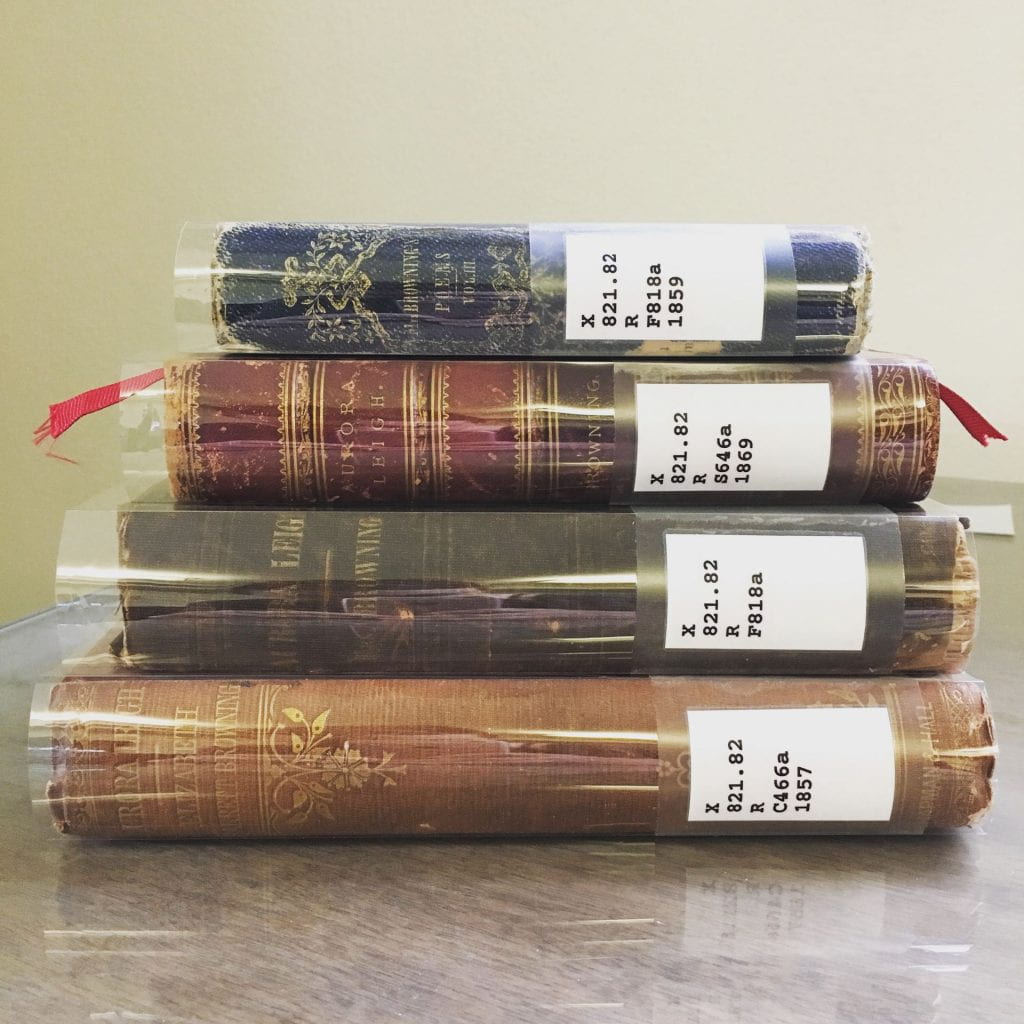‘Every common bush afire with God’: Divine Encounters in the Living World
The exhibition explores the intersection of religious and ecological concerns in nineteenth-century literature and art, from William Wordsworth to Gerard Manley Hopkins. You can read more about its content here. The exhibit was curated by Molly Lewis, a doctoral student of English at Baylor University during a ten-week summer internship through the Armstrong Browning Library.
Welcome to the Process: What I Learned and How I Did It
At the beginning of the summer, all I knew about the exhibition was its general topic—ecology and religion. How the Brownings and their contemporaries explored this topic in their writing was a mystery to me. I began by talking to people familiar with the authors at the ABL, especially Dr. Josh King. I also read through a lot of secondary scholarship on my topic and hunted down primary texts those authors may have referenced. Emma Mason’s recent book, Christina Rossetti: Poetry, Ecology, Faith, for example, includes a comprehensive chapter on Rossetti’s relationship with the Tractarians. Though they didn’t end up in the exhibit, the ABL holds a wide collection of tracts and pamphlets from this nineteenth-century religious movement so influential to the poet. I spent several weeks slowly looking through each item my secondary reading suggested to me, often using keyword searches of digital editions to narrow my focus. This kept me from over-handling rare and fragile volumes.
When multiple copies of the same text we available, I compared those copies to determine which one displayed my chosen text most clearly, which was most durable for display, etc. The Library has many copies of Elizabeth Barrett Browning’s Aurora Leigh, for example. Not only did I keep a recently-published critical edition at my desk for my own reference, I looked at half a dozen editions to determine which one showed the “Every common bush afire with God” passage most readably. I compared Wordsworth’s first and second editions of Lyrical Ballads to EBB’s own collection of his poetry to see which would best illustrate not only his conviction about nature’s capacity for spiritual renewal but also the influence that vision had on the poets that came after him.
I photographed everything I looked at so that I could reference digital images when necessary. This also reduced how often I handled the books. When I had found a few dozen solidly relevant and compelling texts, I grouped them by theme, and considered how they might relate to one another. Texts that had less in common with the rest, I culled. Sometimes a connection—like the burning bush image in two separate poems by two different authors—made my choice for me. I wasn’t planning on using that particular page of Aurora Leigh to begin with, but it makes for a very interesting comparison with Christina Rossetti’s sonnet, “Tread softly! all the earth is holy ground.”
Some discoveries were surprises. For example, I looked at Coleridge’s Rime of the Ancient Mariner self-indulgently. After all, if a first edition Coleridge is available, you ask to look at it. As I was rereading the poem—which I hadn’t really looked at closely for years—I realized that it shared the same central theme of the relationship between recognizing nature’s beauty and being able to pray that several other poets had already considered. Including Mariner pushed me to display the “Linnets” poem from Sing-Song in addition to “Hurt No Living Thing”—even though that meant relying on facsimiles, as the pages don’t face each other.
Once these decisions were made, I began drafting text for each item based on what I knew. I revised that text for brevity, then asked for feedback from peers and professors. This feedback led to a lot more clarification about each item’s unique characteristics as well as their relationship with the overall theme. As I revised, I also digitized some texts for use in blog posts, social media, and other promotional material. I worked with Laura French and others at the ABL to build custom cradles for display. And I continued reading about the subject, the authors, and the texts along the way. There’s still a lot for me to learn about these authors and this subject, but the process of curating the exhibit has been a remarkable opportunity to learn about the Armstrong Browning Library’s resources and the long history of ecological care rooted in robust Christian faith and practice.
Read more in this series of blog posts about the exhibit “‘Every common bush afire with God’: Divine Encounters in the Living World“:
- ‘Every common bush afire with God’: Recognition, Prayer & Gratitude in the ABL’s Archives
- “Every common bush afire with God”: How Shall We Live Now?
- ‘Every common bush afire with God’: Welcome to the Process
- ‘Every common bush afire with God’: Things Not Shown



